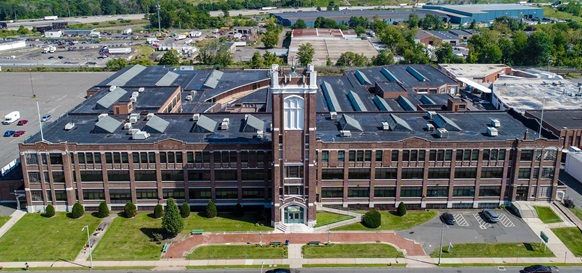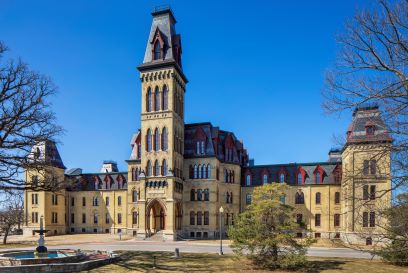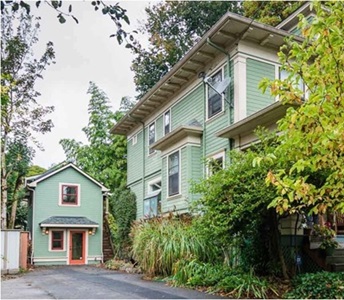Many communities across America are experiencing housing shortages, especially shortages of affordable housing. Tackling this challenge requires a multi-pronged effort, of which rehabilitation of historic buildings is a critically important component. Recognizing that facilitating rehabilitations can help boost housing supply, meet sustainability goals, and utilize community assets more effectively, the ACHP has adopted a policy statement to encourage both rehabilitation of historic housing (including historic public housing) and adaptation of historic buildings not originally built for housing.
ACHP Policy Statement on Housing and Historic Preservation

in the historic Fuller Brush Company Building in
Hartford, CT (Photo: Project sponsors)
In December 2023, the ACHP announced its adoption of a Policy Statement on Housing and Historic Preservation. The policy statement was published in the Federal Register in February 2024. A summary of the policy statement is provided below and in an ACHP Policy Chat webinar.
Through it, the ACHP commits to encouraging and accelerating rehabilitation of historic buildings for housing and to harmonizing historic preservation and housing goals. The document will guide the ACHP's own actions, including its oversight of Section 106 of the National Historic Preservation Act, which requires federal agencies to consider the impact of around 120,000 undertakings (including housing construction and financing) annually on historic properties. Importantly, the policy statement encourages a focus on effects to exterior (not interior) features, encourages federal historic preservation standards to be flexibly applied, and promotes streamlining of reviews.
The policy statement also is designed to advise all levels of government, community groups, nonprofit organizations, developers, and others in the private sector on the role historic buildings can play in alleviating America’s housing shortage.
The policy statement discusses the need for more incentives - including expanded rehabilitation tax credits, plus energy and housing credits that work well with rehab credits - to promote rehabilitation of historic buildings for housing and the need to remove disincentives. For instance, changes to zoning codes could encourage greater density and availability of housing, and allow for mixed uses and for creation of housing in historic buildings in areas where it is now prohibited. Such changes would encourage conversion of historic office, commercial, and industrial buildings to housing and generate compatible infill construction. New amendments to or interpretations of building and other development codes also could facilitate conversion of nonresidential historic buildings to residential use and prioritize disability access.

Home was rehabilitated through the
Department of Veterans Affairs
Enhanced-Use Lease Program to
house homeless (or at risk) veterans.
(Photo: Project sponsors.)
The policy statement supports the federal government making underutilized historic government buildings available for housing development and developing expanded guidance regarding reuse and rehabilitation of historic properties for housing. Expediting environmental review (including Section 106 review) of housing projects while still considering potential impacts to historic properties is another key theme of the policy statement.
The policy statement encourages consultation and engagement with Indian Tribes, Native Hawaiian organizations, disadvantaged and underserved communities and communities with environmental justice concerns, all of which are disproportionately affected by the housing shortage. Another focus of the document is the need for research and sharing of information about the costs, benefits, incentives, and disincentives associated with rehabilitating historic buildings for housing. Such work will support education, cooperation, and partnerships across agencies, between levels of government, and within communities regarding reuse of historic buildings for housing.

Montgomery County, MD” 2022
online guidance.
(Photo: buildinganadu.com)
This policy statement builds on related statements on historic preservation and affordable housing published in 1995 and 2006.